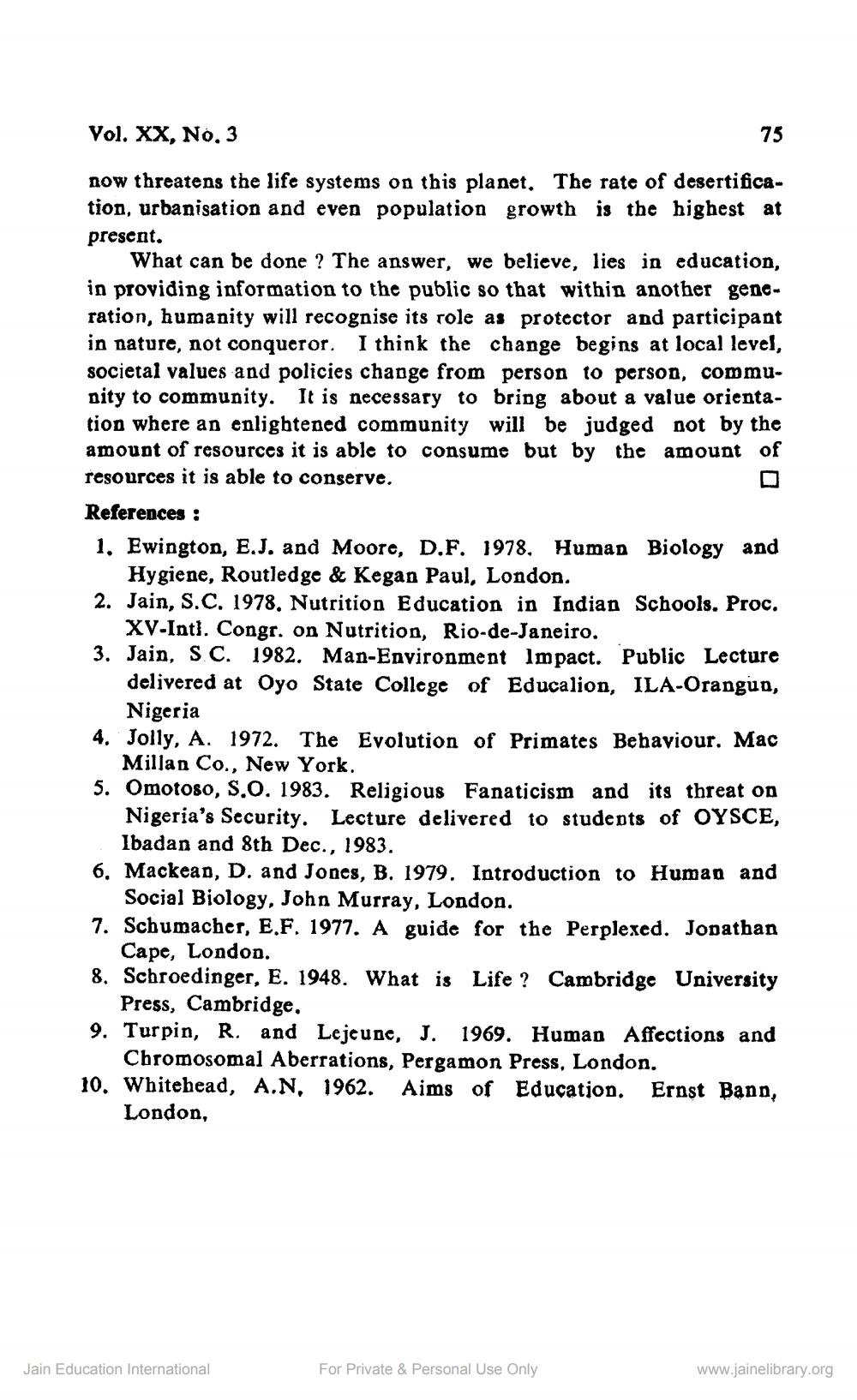________________
Vol. XX, No. 3
73
now threatens the life systems on this planet. The rate of desertification, urbanisation and even population growth is the highest at present.
What can be done ? The answer, we believe, lies in education, in providing information to the public so that within another generation, humanity will recognise its role as protector and participant in nature, not conqueror. I think the change begins at local level, societal values and policies change from person to person, community to community. It is necessary to bring about a value orientation where an enlightened community will be judged not by the amount of resources it is able to consume but by the amount of resources it is able to conserve.
References : 1. Ewington, E.J. and Moore, D.F. 1978. Human Biology and
Hygiene, Routledge & Kegan Paul, London. 2. Jain, S.C. 1978, Nutrition Education in Indian Schools. Proc.
XV-Intl. Congr. on Nutrition, Rio-de-Janeiro. 3. Jain, S.C. 1982. Man-Environment Impact. Public Lecture
delivered at Oyo State College of Educalion, ILA-Orangun,
Nigeria 4. Jolly, A. 1972. The Evolution of Primates Behaviour. Mac
Millan Co., New York. 5. Omotoso, S.O. 1983. Religious Fanaticism and its threat on
Nigeria's Security. Lecture delivered to students of OYSCE,
Ibadan and 8th Dec., 1983. 6. Mackean, D. and Jones, B. 1979. Introduction to Human and
Social Biology, John Murray, London. 7. Schumacher, E.F. 1977. A guide for the Perplexed. Jonathan
Cape, London. 8. Schroedinger, E. 1948. What is Life ? Cambridge University
Press, Cambridge, 9. Turpin, R. and Lejeune, J. 1969. Human Affections and
Chromosomal Aberrations, Pergamon Press, London. 10. Whitehead, A.N, 1962. Aims of Education. Ernst Bann,
London,
Jain Education International
For Private & Personal Use Only
www.jainelibrary.org




